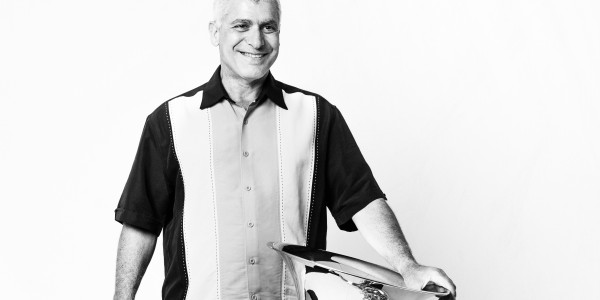Awareness is the most important first level of breath training for young brass players. There needs to be a team meeting at the beginning of low brass class to introduce them to the new world we will live in. Both breathing health and development of airflow mastery are two EARLY goals for them to become life long practitioners of both. A large investment in this very basic area of playing will change your band forever, from the low brass up!
Of course, I have to urge you all to Google the Breathing Gym by fellow Jupiter Artist/Clinician/Designer Patrick Sheridan and myself.
Our work is to make play therapies for young band students to become highly aware of the relationship between air usage and how you sound… Highly aware of how easy it is to play when you are a daily practitioner …. Highly aware of getting better while consistently working on better body balance, better breathing, better subdivision of rhythm during the exercises, better hearing of pitches in the mind’s ear while wind patterning the music in the exercises. So many benefits by investing in the basic of good breathing!
Young low brass players need to use this sequence at the beginning of every playing day:
- First, Breathe It! Do breathing exercises to eliminate tensions, balance the body posture, and make large amounts of good airflow the norm when making music. This will create the feeling of ease while playing from the beginning of Every Day. Time investment: 5 minutes at the beginning and allude to those exercises throughout the rehearsal to help create awareness of that feeling of ease.
- Second, Buzz It! Low brass players benefit greatly by buzzing the mouthpiece well. It takes more air than playing your instrument, so musical breathing here will feel easy on the instrument. Buzzing creates clarity in low brass sounds. This intense training needs to be done in INTERVAL TRAINING style…for every 30-60seconds of buzzing, you should rest for one minute. The need for this rest period makes it a very good idea to combine the breathing and the buzzing activities to start a class.
There are two types of buzzing activities, both of which improve the low brass playing greatly.
- First, glissing on the mouthpiece from note to note when moving. Practicing this way will eliminate “dead spots” and insure great buzz response when playing.
(Also good ear training….”when do we stop glissing ?”…students get more micro accurate by audiating the next pitch while glissing ).
- Second, target buzzing all notes ( buzzing exactly the next note… No gliss). This works on the relationship between ear and buzz….(hear it, buzz it EXACTLY).
Breath attacking such mouthpiece exercises accurately can bring great improvement to the low brass response and centering of pitches… (air makes buzz makes great tone on instrument).
Total time invested for breathing and buzzing combined is about 8 minutes at the beginning of each class.
The ease and flow during the beginning of class can be found again by practicing on any passage from the work material in the following REHEARSAL SEQUENCE:
- Wind pattern the music excerpt on your hand
- Buzz it on the mouthpiece
- Play it on the horn
I know no better way to start the day with young low brass players.
All beginning players want to sound like that recording you played for them or the playlist you have them follow…..RIGHT?????! So now we are giving them sound breakthroughs daily when, with the better wind and better embouchure efficiency, they TRY to achieve what they hear on those recordings. The result of this well-integrated low brass diet is an evermore Characteristic Sound coming from the low brass, and YOU CAN BUILD A BAND ON THOSE SOUNDS !!
Next, we will talk about how to set an etude practice agenda to compensate for the lack of challenge in the part-writing for young low brass players. “How to build whole sections of Grade 6 ready low brass players!!”
About the Author
SAM PILAFIAN is tubist and arranger for Boston Brass, Educational Ambassadors for Jupiter Band Instruments Corporation. He also holds Jupiter appointments as Artist, Clinician and Chief Design Consultant. He is a Professor in Practice at the Frost School of Music, University of Miami and was a founding member of the internationally renowned Empire Brass Quintet (1971-1993).He has also recorded and performed with the Boston Symphony Orchestra, the New York Philharmonic Orchestra, the Orchestra of St. Luke’s, the Metropolitan Opera Orchestra, the Duke Ellington Orchestra, Lionel Hampton, and Pink Floyd. As a solo jazz artist, Sam has recorded fifteen CDs. His long career has earned him an Emmy® for Excellence in Instructional Video Production, the Walt Disney Award for Imagination and Innovation in Design, World Championships as a teacher in both the open and world class of Drum Corps International, the Walter Naumberg Chamber Music Award, the Harvard Music Association Prize, the University of Miami’s Distinguished Alumni Award, the Brevard Music Center Distinguished Alumni Award, the Robert Trotter Visiting Professorship at the University of Oregon and the annual Outstanding Teacher Award from the Arizona State University. As an arranger, composer and recording producer, Sam has recently produced and written for Joseph Alessi (New York Philharmonic), the Boston Brass, the Brass Band of Battle Creek, the Academy (of Drum Corp International), and the United States Air Force Band. Sam is the coauthor with Patrick Sheridan of the best-selling pedagogy texts and DVD’s “Breathing Gym” and “Brass Gym”. Professor Pilafian previously served for over forty years on the faculties of Boston University, the Tanglewood Institute, Berklee College of Music and Arizona State University.
The content of this Blog article or Banded Story is the intellectual property of the author(s) and cannot be duplicated without the permission of KHS America and/or the author(s). Standard copyright rules apply.





 We look forward to the evolution of this exciting program, and welcome feedback on how we can further enhance the work that you do in music education.
We are excited to offer your program the opportunity to join the KHS America Academic Alliance today.
We look forward to the evolution of this exciting program, and welcome feedback on how we can further enhance the work that you do in music education.
We are excited to offer your program the opportunity to join the KHS America Academic Alliance today.